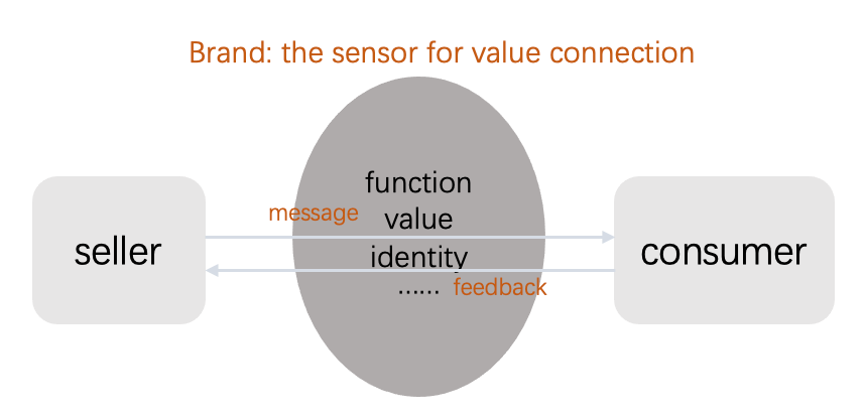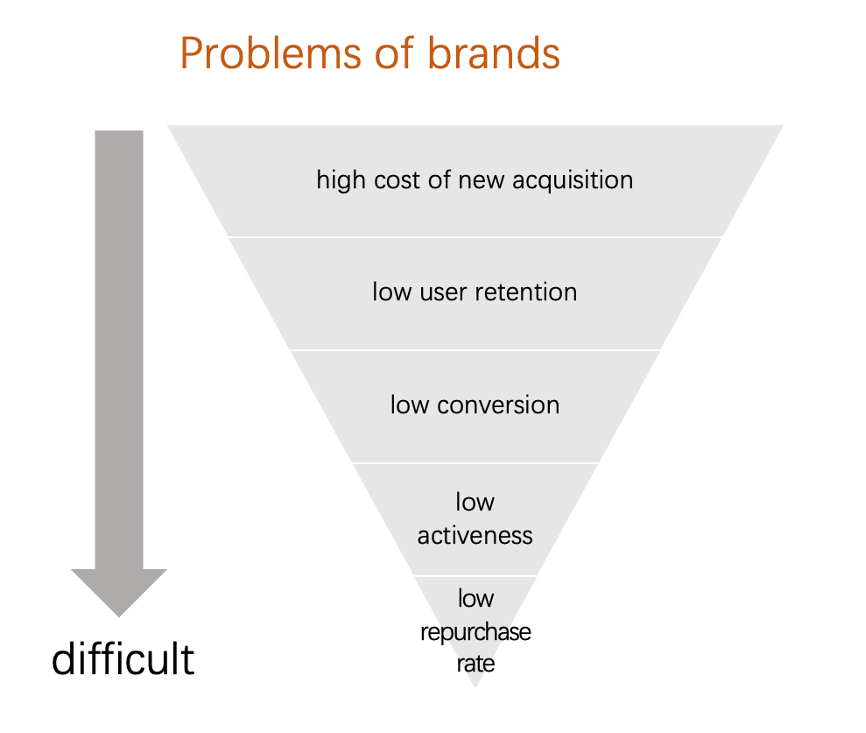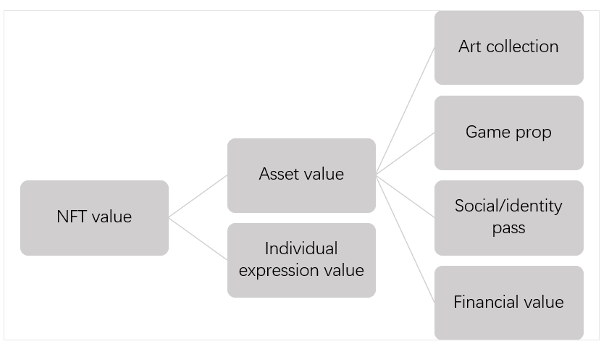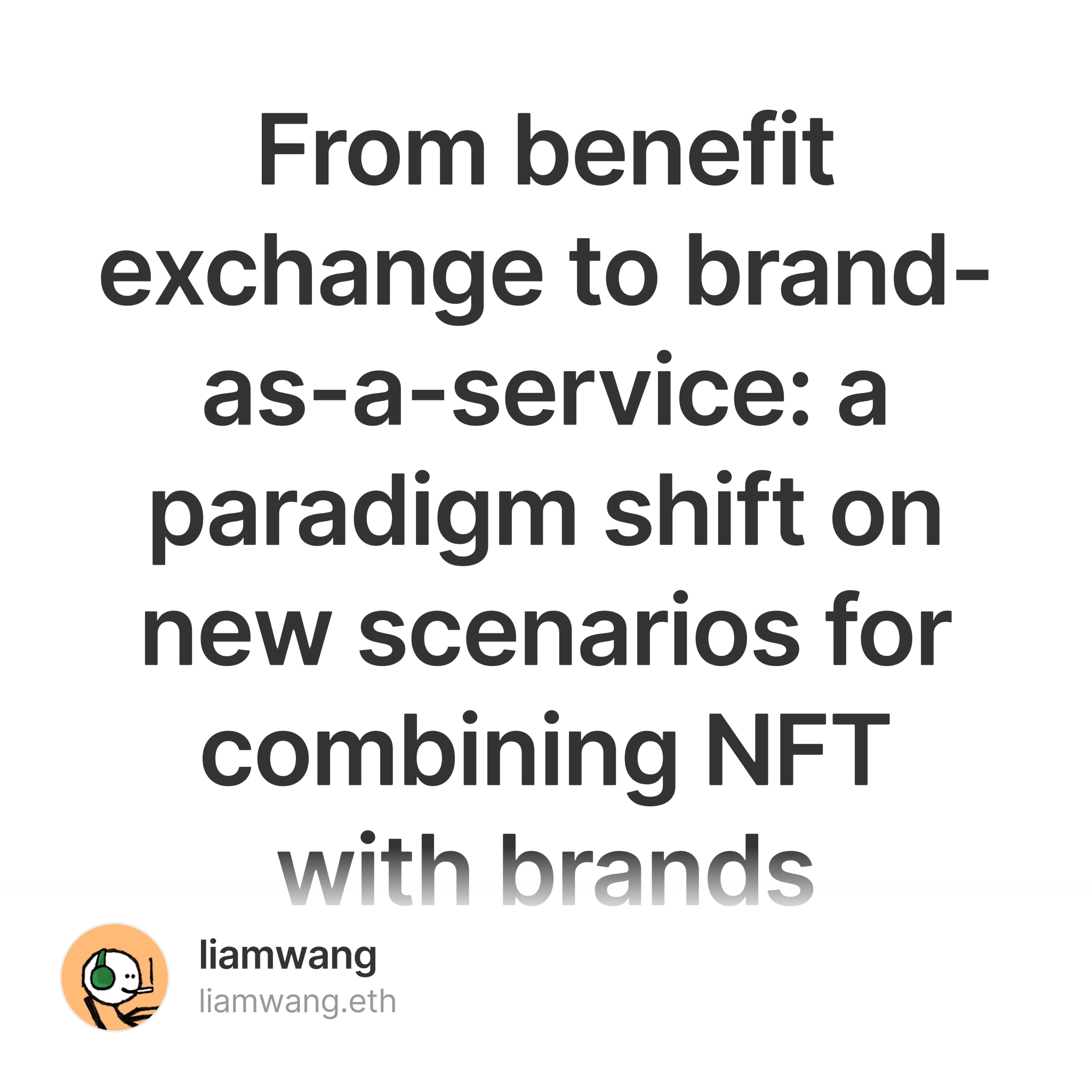In this article, I would like to discuss the new scenarios of combining NFT with brands. There are two reasons for this. Firstly, since last year, there have been multiple discussions about new scenarios of NFT. Discussions were heated after the advent of the bear market, which brought more expectations and reflections about what NFT can be used for. Secondly, in the process of interacting with NFT projects and creators as a Web3 builder, many brands came to me for advice and solutions on NFT marketing. In a nutshell, brands are aware of the possibilities of NFT as a new marketing approach, but they lack understanding and systematic thinking about how and why it can be done.
In order to answer the question of what NFT can do for brands in a more focused way, I wrote this article based on this framework: firstly, we need to go back to the beginning to discuss a topic that seems easily understood, i.e. what is a brand; secondly, we shall discuss what problems brands are facing today based on our experience at present; thirdly, we shall talk more about the value of NFT, and I will list the common values of NFT and explore the possibilities of other values; at last, we shall seek a possible combination of NFT and brands that are worth trying.
Let's get down to business.
Brand: the sensor for value connection
The relationship between seller and consumer is essentially transactional: the seller provides the appropriate goods or services while the buyer pays for the goods or services enjoyed. In a mature market economy, sellers are naturally motivated to expand their customer base and promote repeat purchases. Therefore, their core task is to find ways to achieve this natural motivation.
Branding is one of their ways. The term branding is not strange to marketing practitioners. There are many interpretations and discussions of branding in traditional marketing theory. One of the most classic theories is positioning, which involves building a brand mindset to strengthen the relationship with customers in addition to meeting their practical needs.
In brand marketing practice, we see that almost all sellers are building their brand mindset with different approaches. A brand can be a symbol of strong function, such as the slogan of Head & Shoulders, "Live flake-free". It can also be an expression of values, as in the classic Adidas slogan, "Impossible is nothing", or an emphasis on identity, such as L'Oréal's "Because you’re worth it".
In my opinion, the brand is a sensor of value connection. No matter whether it is a symbol of strong function, an expression of values, an emphasis on identity, or anything else, sellers send a message to consumers through this sensor, which may be functional, emotional, or even combined (e.g. combination of function and emotion). As consumers receive this message, they would give the corresponding feedback. Through the brand, a sensor of value connection, the basis for interaction between the seller and the consumer is formed. When a consumer is faced with multiple sellers offering the same product or service, the brand becomes an important trigger for his or her decision. Over time, the consumer's perception of the seller and the brand become identical - the seller is the brand - and this becomes a powerful fulcrum for scaling customers and driving repeat purchases.

Crisis: the failure of old experiences, the rise of skepticism, the loss of brand practitioners
The approach of building a brand to strengthen the mindset of users and thus expand customer scale and promote sustainable repeat purchases were well proven in the traditional FMCG era, represented by P&G and Unilever, and has since become an effective reference that many brands take for granted. However, over the past 10 years, this approach gradually failed to be universally applicable. Brands are losing their effectiveness as they are faced with these outstanding problems: the high cost of new acquisition, low user retention/loyalty, low conversion, low activeness, and low repurchase rate.

The old approach did not suddenly fail. Instead, there are tracks that gradually appeared.
Firstly, dispersed consumers and their lack of attention have made it more difficult for brands to pinpoint target consumers. In the past, the main sources of information were television, radio, and outdoor billboards, while today, mobile phones, computers, and social media are becoming the main media for receiving and delivering information. The diversification of media channels has brought convenience to people, but it is not favorable for brands. Unlike TV, radio, and outdoor billboards, which can easily reach a large number of consumers, the emergence of mobile phones, computers, and social media has led to a shift from "clustered" consumers to "dispersed" ones. Therefore, it has become more and more difficult for brands to pinpoint their target customers.
Meanwhile, the lack of attention brought about by the information explosion also poses a serious challenge to brands. In order to create a brand mindset, consumers need to notice the brand and be willing to take the time to learn about it. Unfortunately, in the era of information explosion, our attention spans are shorter and shorter as we are 'fed' with quick and fragmented information. These days a short video is only a few seconds or a minute long and a long video is viewed at 1.5x or 2x the speed, so it is not as easy as it used to be for brands to make users feel good and identify with them.
Secondly, traditional Internet marketing methods have made consumers more "fluid", which has raised the bar for brands in terms of customer acquisition, retention, and repeat purchases. Over the past 10 years, when Internet companies were spending massive money on marketing to quickly acquire customers, they were also fostering their sense of subsidy, leading them to habitually regard price as the basis for making decisions rather than brand influence. At the same time, with the awakening of subsidy awareness, more and more consumers are becoming "smart" – they are immune to brand advertising and no longer blindly attracted. The bigger challenge is that, as "user experience" is given prominence in marketing, consumers are beginning to use it as a "tool" to demand more from brands. This explains why words like "customization" and "user insight" have been stressed by brands over the past few years.
Thirdly, the decline in spending that accompanies the economic cycle has also made brands less effective in terms of new and repeat purchases. In the past five or six years, people have been talking about consumption upgrading, but in the past year or two, more and more discussions are about "consumption downgrading". Consumers are becoming shrewder with their money. On-demand consumption replaced luxury consumption to be the choice for mass consumption. Brands are investing more money on new acquisitions and consumer loyalty, however with less outcome.
The failure of old experiences has led brand owners to wonder: is it still useful to invest a lot of resources in building brand power? Along with the rise of skepticism, brands have evolved in terms of marketing approaches. First, in the past, brand marketing was regarded as a separate marketing module, while today more emphasis is placed on the integration of brand and effectiveness. Second, having seen the capacity of big data, more brands have become obsessed with precision marketing, emphasizing the ROI input-output ratio. Third, whether it is live streaming, ad placement, private sector, or others, consumers with more simple and direct benefit perceptions are focusing on the price instead of the brand. Fourth, as the traffic dividend disappears, brands are focusing on the continuous operation of stock customers rather than the acquisition of incremental customers.
All these new changes have left brand marketing practitioners feeling lost. The word I hear most in my conversations with practitioners is "difficult": budgets are being slashed, ROI of advertising/events is low, and bosses are more focused on actual output, all of which are internal resistance to their efforts. Branding is still important, but it's not as important as it used to be. As one of the practitioners told me, "Brands need to find a new narrative to fall back on, not only to win the hearts and minds of consumers but also to win internal recognition." It seems that brand practitioners are now looking to NFT as a breakthrough in solving the brand narrative puzzle.
NFT: A combination of asset value and individual expression value
When we talk about NFT, it's important to find out what NFT is. The dominant feature of NFTs, or "non-fungible tokens", is that they are indivisible and unique, compared to crypto assets such as Bitcoin. Your bitcoin is the same as the one of everyone, but the NFT you own must be different from everyone else.
Looking at today's market, there are four main usages of NFTs.
The first is art collecting. For example, Beeple's Everydays: the First 5000 days NFT sold for $69 million at Christie's in March 2021, the third highest auction price for a living artist after Jeff Koons and David Hockney.
The second is a game prop in Gamefi. When you play Axie Infinity, you'll need to buy NFT props as a prerequisite for the game.
The third is social/identity pass. When you buy an avatar of BAYC or crypto punks, you have access to the community and you can show that you are different from others.
The fourth is the financial value of NFT. This means that you can invest/speculate by buying, selling, renting, lending, or paying in installments to earn income or increase the liquidity of NFT assets. The buying and selling of NFT are relatively easy to understand. After all, NFT is a crypto asset, and as NFT is characterized as an asset it also has the characteristics of trading. Meanwhile, since last year, we have seen several emerging startups, seeking to solve the lack of liquidity in NFT from the angle of fragmentation, renting, lending and installment, etc.
Except for the third, the common premise behind all use values is to consider NFT as an asset. But besides the perspective of asset, there is another value of NFT from the creator economy - in the world of Web3, NFT blows the trumpet of individual self-expression.

How do we understand this value? From Rare Pepes to Crypto Kitties, Crypto Punks to BAYC, Azuki, Doodles, Moonbirds, and MEME representatives such as mfer and Goblintown, the NFT projects use their own narratives to attract people who identify with them, creating a force through the community to express their values, emotions, preferences, and positions to the outside world.
Whether we acknowledge it or not, the world is becoming increasingly chaotic and torn apart, with the regression of globalization, the rise of populism, the widened gap between the rich and the poor, and the invasion of privacy brought about by the monopoly of Internet giants, the intensification of regional conflicts and wars, the fierce rivalry between major powers, the impact of the pandemic, and many other factors that continue to threaten the stability of international order and global system. In the midst of turbulences, stable consensus bases have been shattered, and decentralization or anti-authoritarianism has become increasingly accepted. Individuals are more motivated to express themselves and form certain influences through their expressions.
In addition, the growth of the Z generation has made self-expression even more important. Compared to their parent's generation, young people are more independent and more willing to express their opinions and ideas. Today, on social media platforms such as YouTube, Instagram, and TikTok, we see more and more young people expressing their personalities, ideas, and values through text, video, and music.
Some might say that self-expression doesn't seem like a novelty, as it is already mainstream in the traditional creator economy. I agree with this statement; however, I think that NFT will give people the desire and ability to express their rights more than in the past. The reason is that NFT is an important part of Web3, and the values advocated in Web3 such as decentralization, de-trust, privacy protection, affirmation of rights, putting revenue back in the hands of creators, and respect for individual expression will all be reflected and recognized in NFT. Whether you have an NFT avatar or create your own NFT (PFP, music, video, etc.), you will realize that you have a most important identity - an expresser that can make your voice heard by the world and win your own users and fans.
This also convinced me of something else: just as today everyone is able to make TikTok videos and earn money that way, the threshold for NFT production and creation will be as low as making TikTok videos, which means that everyone will have the opportunity to produce and create their own NFTs. In other words, in the future, one can be a consumer of NFT, as well as a producer.
The combination of NFT and branding: brand as a service
After talking about the value of NFT, it's time to return to the central theme of this article: what are the new scenarios in which NFT and brands can be combined? As I mentioned above, the relationship between brands and consumers is benefit exchange, with brands providing certain goods or services and consumers paying for what they enjoy. Once the transaction is concluded, the relationship is weakened, which is why every brand wants to strengthen its brand power to continuously maintain or enhance its relationship with consumers. But in the era of Web 3.0, the emergence of NFT has the potential to essentially change the relationship between brands and consumers, where the transaction is not the end of the relationship, but the beginning of it. That is my thought – Brand as a Service.
How can this be done? Let me explain it through a virtual example.
[Problem to be solved]
A fashion brand offers a series of 10,000 T-shirts priced at $80, and the customer gets an NFT after spending $80. How could this brand increase sales and enhance consumer loyalty through NFT?
[Possible approach]
Step 1: This brand should make its NFT a CC0 project, i.e. to give up copyright and allow consumers to recreate the NFT after purchasing the brand's T-shirt. One small note: the CC0 statement only waives copyright, but no other rights not mentioned, such as trademark rights and patent rights.
Step 2: In addition to giving consumers the opportunity to create their own products, the brand could launch a community competition for recreations and let the community vote on them. For example, the top three recreations could cooperate with the brand to sell NFTs and clothes, and the proceeds from the sale could be shared in a certain proportion.
Step 3: Each consumer will accumulate a certain amount of contribution, and the brand can award additional NFTs with different levels of rarity according to different contribution levels (the weighting can be a certain amount of consumption + recreation activity + sales of recreation NFTs and clothes, etc.) The NFTs are programmable, and the rarity will be enhanced with an increase in consumer contribution. The rarer the item, the more valuable it is to collect and distribute.
Having said that, for the above example to be realized, several prerequisites need to be in place:
- An NFT creation tool with a low threshold enables every consumer to recreate NFT.
- A change in the brand's perception. The brand needs to transition from the single interest relationship of the past to the perception of the brand as a service.
- Web3 becoming more widespread among consumers.
Today, we are pleased to see that more and more brands are trying to use NFT to connect with users. Examples include Starbucks' upcoming coffee-themed user loyalty program, Coca-Cola's Pride Collection NFT in collaboration with Rich Minsi, Tiffany's limited NFT "NFTiff", etc.
But in general, the combination of NFT and brands at present is more of marketing gimmicks, low-cost new acquisitions, and new membership, and is still essentially at the level of benefit exchange. I propose brand-as-a-service in hope of exploring and redefining the relationship between brands and consumers from NFT or Web3, i.e. consumers and brands are no longer corresponding subjects to each other; consumers can become designers for brands, and can also own their own brands based on existing brands. Of course, this does not mean that every consumer will become a designer or own their own brand, just as we all have the ability to become We Media, but not everyone chooses to be a TikToker. But this is where Web3 is most meaningful, not only presenting the value of decentralization, de-trust, privacy protection, and empowerment but also making it more possible for the masses to have a voice and be creative (as evidenced by DAO), an opportunity that is more inclusive and open to all.
I have always believed that Web3 and Web2 cannot be two separate worlds and that Web3 should be rooted in real life and solve real-life problems. The new scenario of combining NFT with the brand is an evolving topic and is a focus for me. I look forward to discussing with more brand owners and those interested in Web3, and to thinking about and exploring the broader picture of NFT with you.
